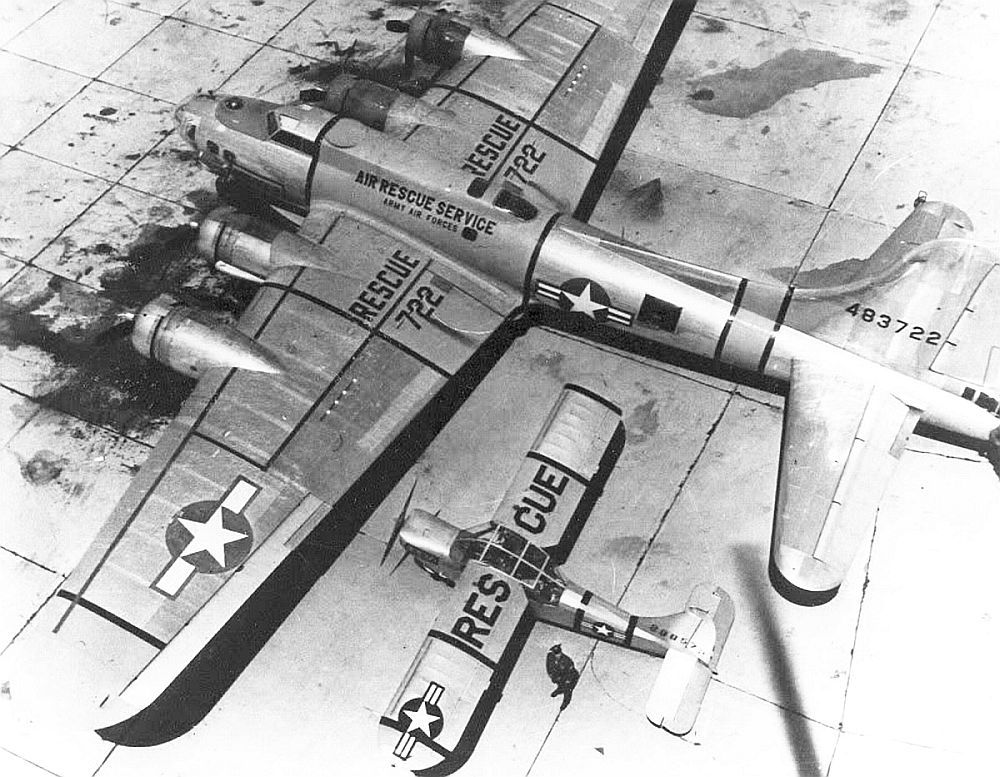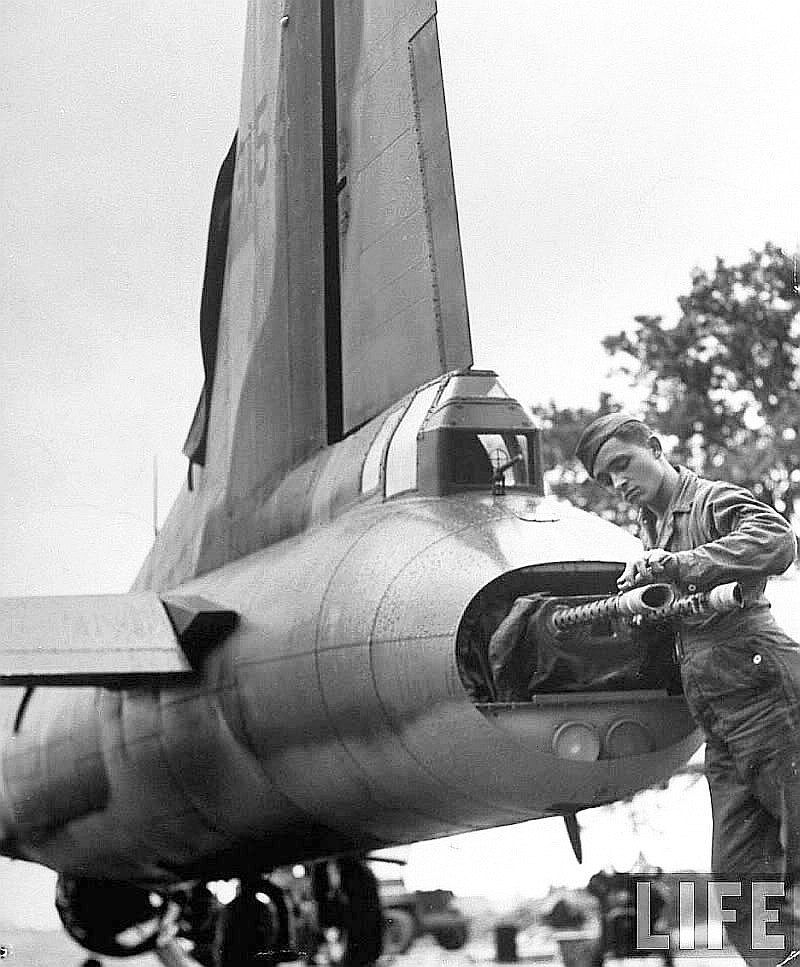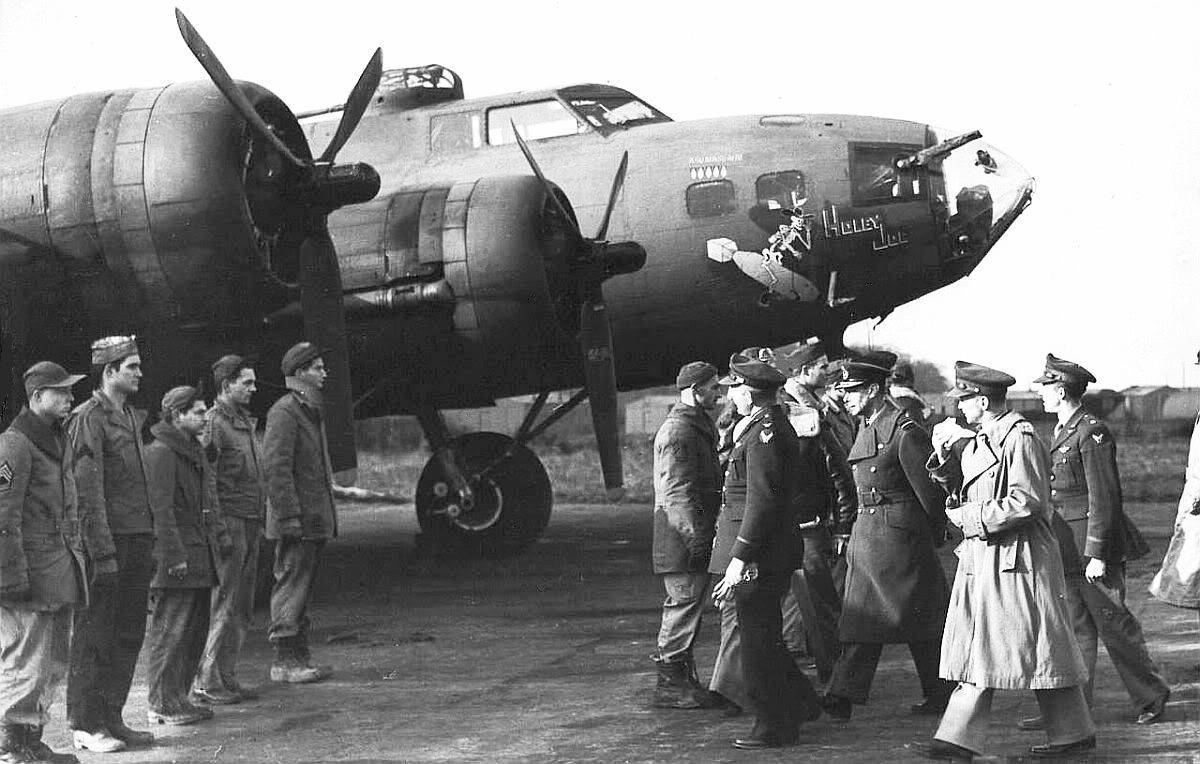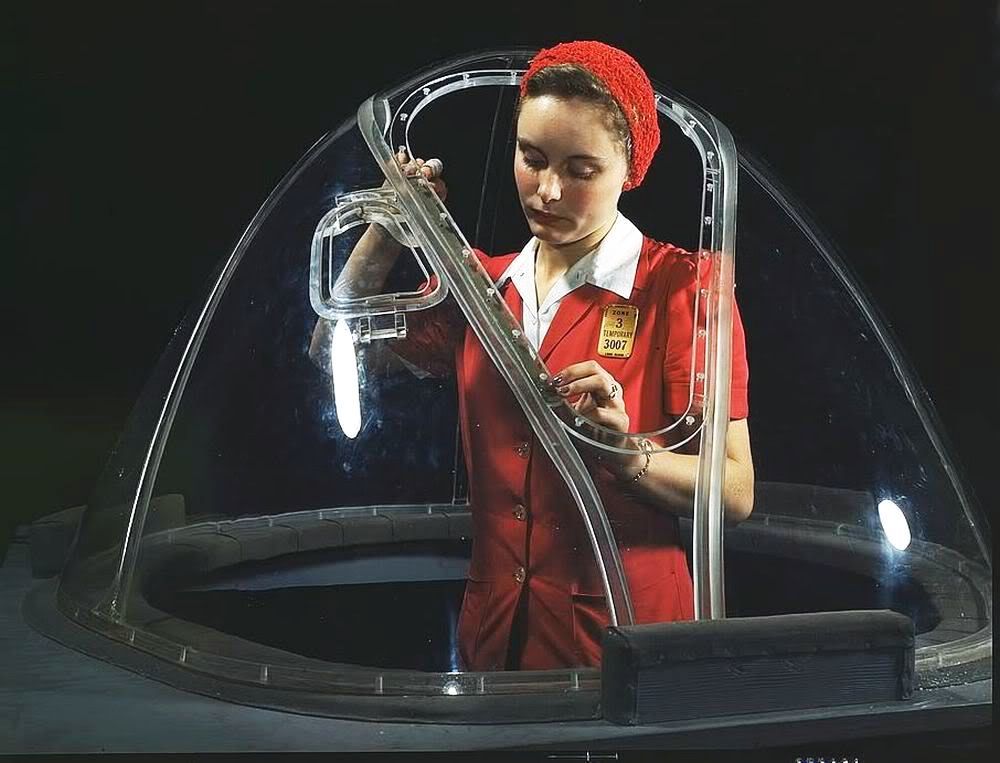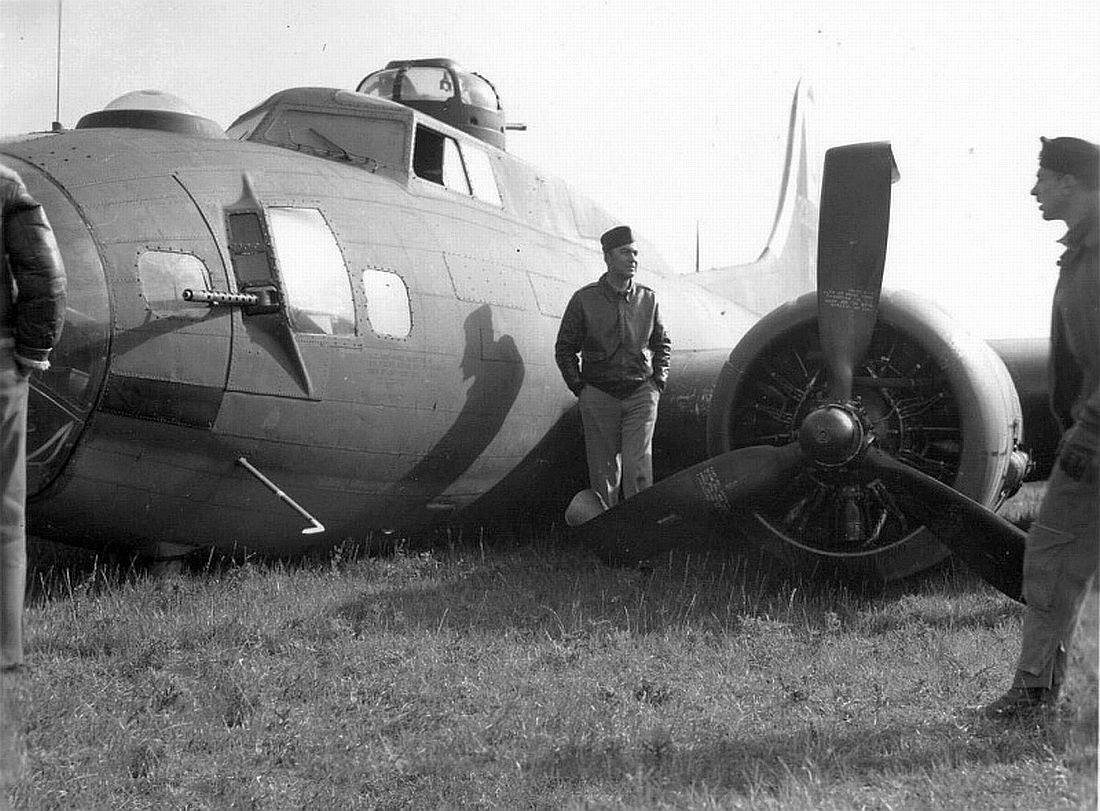Estás usando un navegador obsoleto. No se pueden mostrar estos u otros sitios web correctamente.
Se debe actualizar o usar un navegador alternativo.
Se debe actualizar o usar un navegador alternativo.
B-17 Fliying Fortress
- Tema iniciado Shandor
- Fecha de inicio
20 Images of Damaged B-17 Bombers That Miraculously Made It Home
Jun 19, 2016 Joris Nieuwint
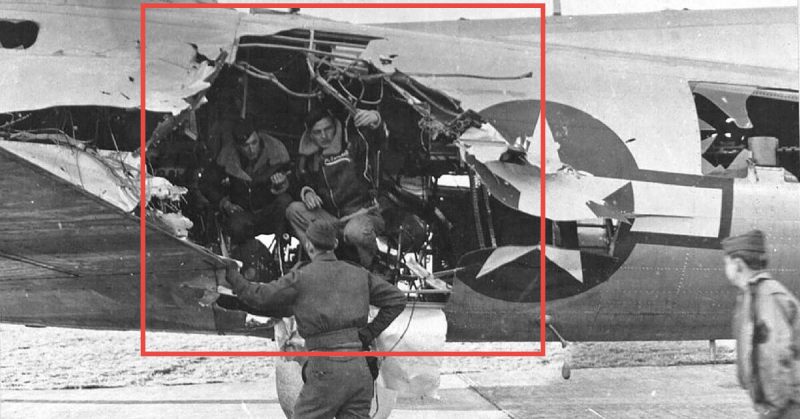
SHARE:FacebookTwitter
The B-17 Flying Fortress was famous for being able to take a lot of damage and still make it back to base. We have collected some incredible images of damaged B-17 Flying Fortresses that made it home.
https://www.warhistoryonline.com/military-vehicle-news/damaged-b-17-bombers-that-made-it_home.html
During WWII 12,732 B-17’s were produced between 1935 and May 1945. Of these 4,735 were lost in combat, a staggering 37 percent.
Each image could and should be an article in itself, and wherever possible we’ve added some descriptive text.
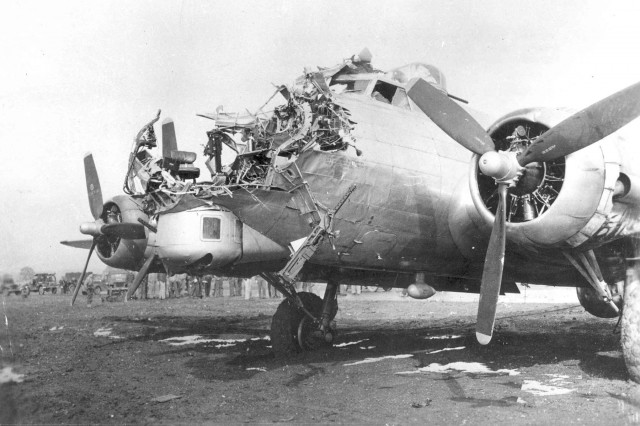
B-17G 43-38172 of the 8th AF 398th BG 601st BS which was damaged on a bombing mission over Cologne, Germany, on 15 October 1944; the bombardier was killed. [via]
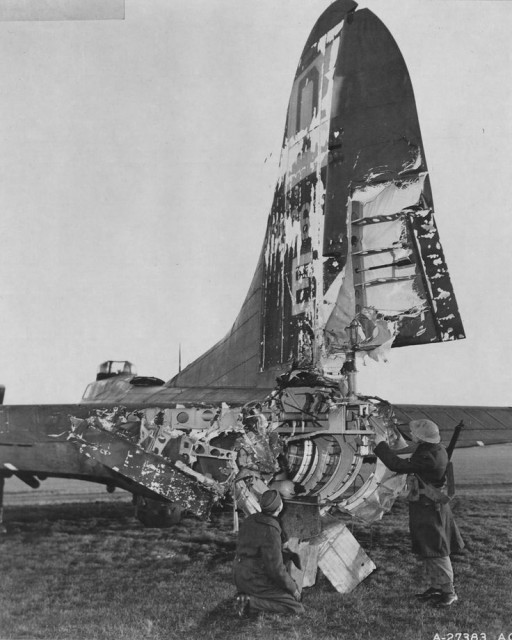
A B-17 of the 100th Bomber Squadron of the USAAF rests in an English airfield after being severely damaged by flak over Frankfurt. She was eventually repaired and returned to regular duty, 1944. [via]
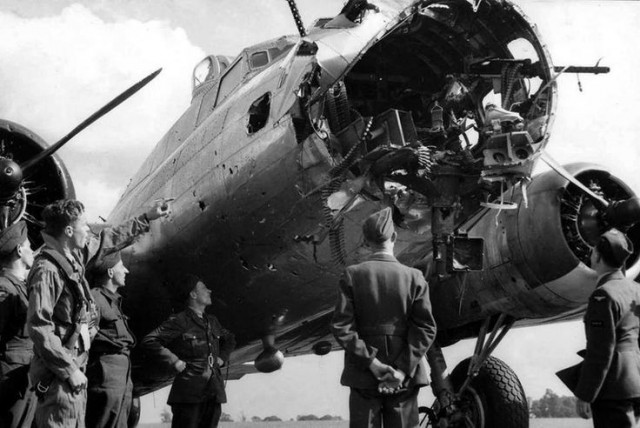
Two shots of a B-17 from the 379th Bomb Group with most of the nose missing [via]
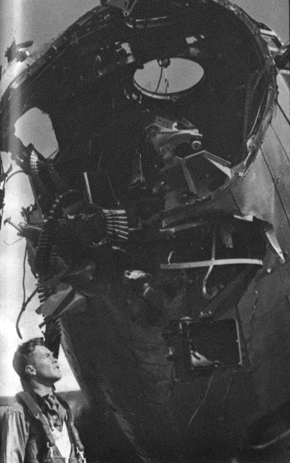
On the second one it seems the Pilot is looking up at the damage [via]
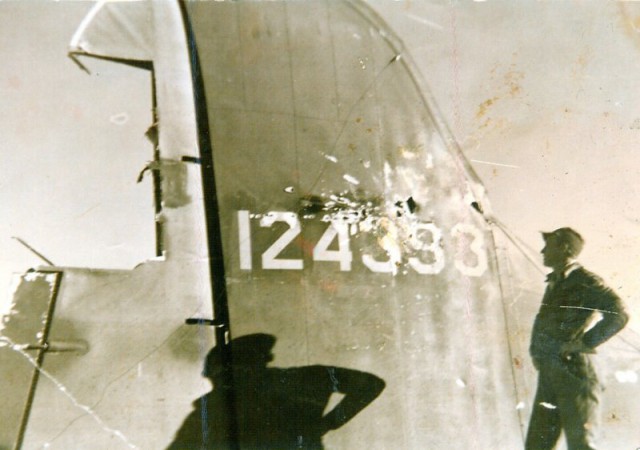
B-17 Eager Beaver Tail Damage (C. 1942). Serial No. 124393 full of holes. The entry in the pilot’s diary, dated Feb 18th, 1943, says, “New waist gunner shot hell out of tail today. Ship out for a week.” “For the full story and all entries from dad’s diary, see my book on Amazon.com “A WWII Journal” by Randy Graham.” [via]
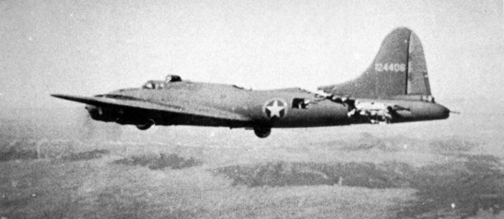
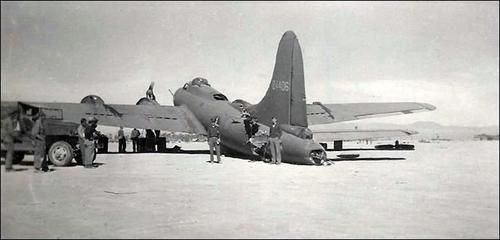
Boeing B-17F-5-BO (S/N 41-24406) “All American III” of the 97th Bomb Group, 414th Bomb Squadron, in flight after a collision with an ME-109 over Tunis. The aircraft was able to land safely at her home base in Biskra, Algeria. [via]
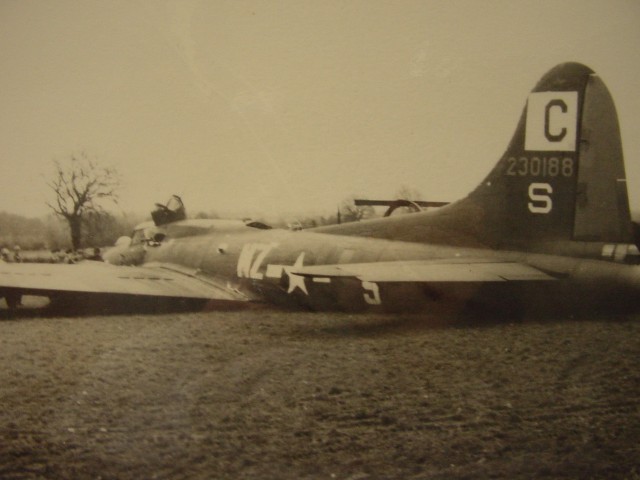
4th of February, 1944, Boeing B-17F-90-BO Flying Fortress, 42-30188, “Temptation” of the 413th Bomb Squadron, 96th Bomb Group, during take off for a mission, suffers runaways on Nos. 1 and 2 propellers. Lt. Joseph Meacham attempts landing at a nearby – as yet unfinished – base, but crash lands at East Shropham, Norfolk, All eleven crew survive, but the aircraft is damaged beyond repair and is written off, fit only for parts salvage. [via]
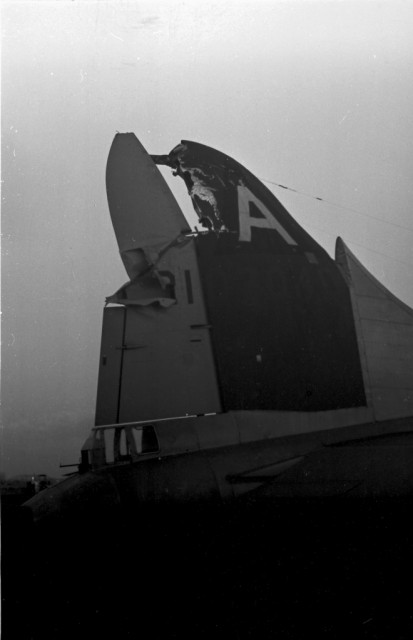
This is 42-107040, Shirley Jean of the 324th Bomb Squadron, 91st Bomb Group. [via]
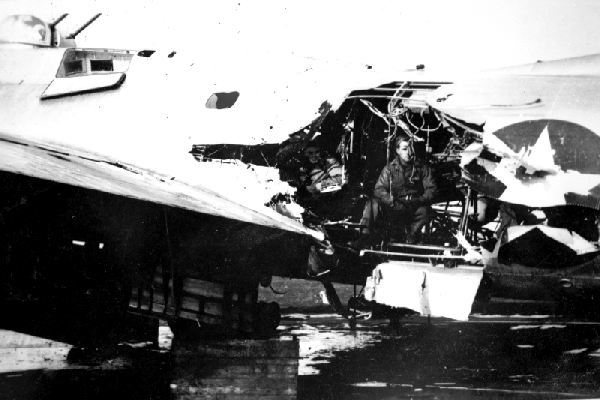
6th November 1944, B17G Rackheath – Close-up view showing the enormous hole from the flak-damaged B17 of the 91st BG that returned safely to Rackheath. [Via]
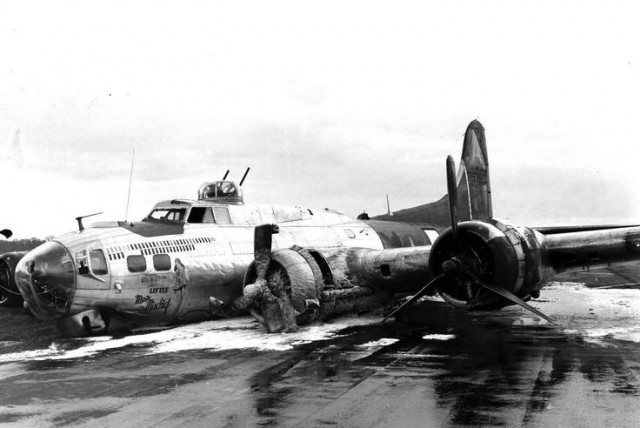
B-17 Little Miss Mischief after an emergency landing in Bassingbourn [via]
Continues on Page 2
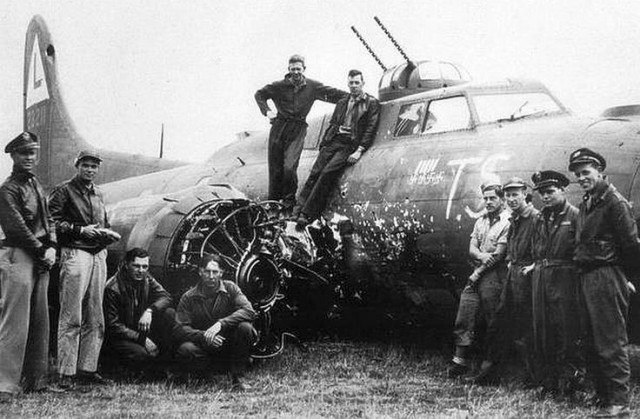
B-17 damaged in collision with Fw190 in head-on attack [via]
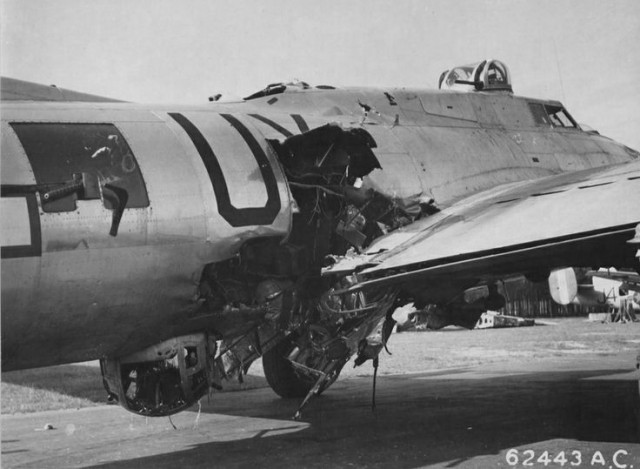
Waist gunner killed, ball turret gunner killed, radio operator blown out of the airplane completely, but this Fort still managed to get home and land without cracking in half. [via]
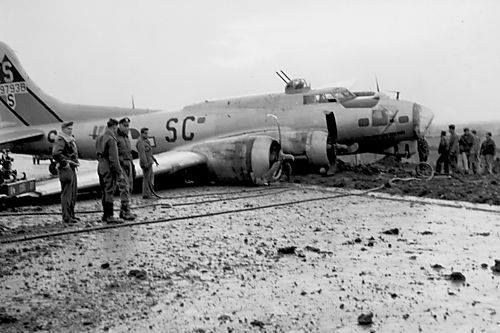
401st Bomb Group B-17G Belly Landed in England, October 29th, 1944.
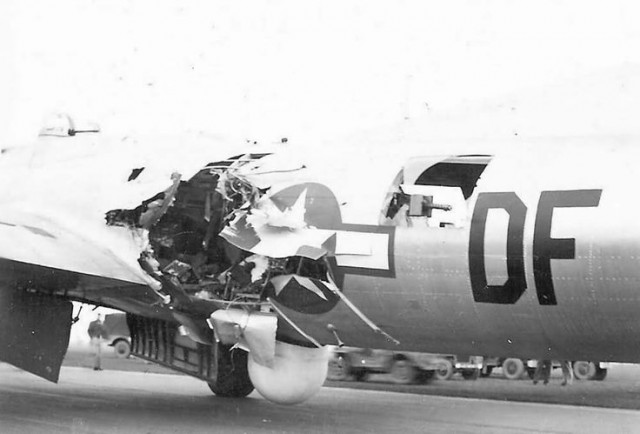
B-17 91 Bomb Group 324 Bomb Squadron with heavy flak damage [via]
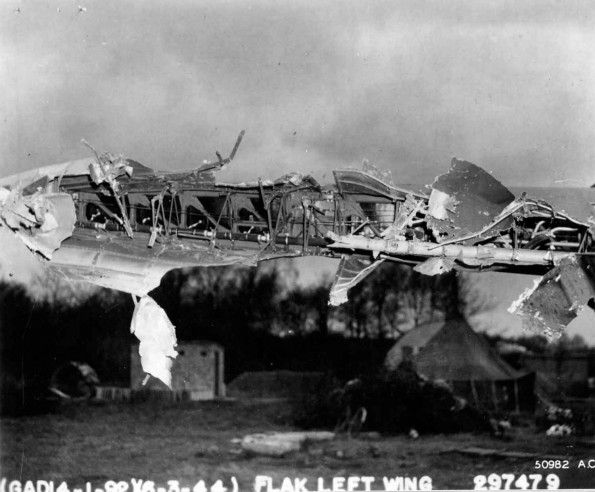
The “Belle of Liberty” Lockheed/Vega B-17G-15-VE s/n 42-97479 327th BS, 92nd BG, US 8th AF. Damaged on the 6th of March 1944 mission to bomb the ball-bearing plant at Erkner, in the outskirts of Berlin. This aircraft was repaired and went back into service. [via]
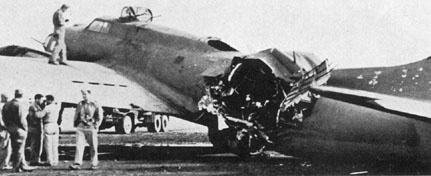
This B-17 took a direct flak hit in the waist over Debrecen, Hungary, which killed three crewmen and wounded two others. Threatening to come apart in mid-air the pilot nursed it home to a safe landing, but the weakened fuselage collapsed on touchdown. [via]

The only information that came with this photograph was B-17F – 97 Bomb group
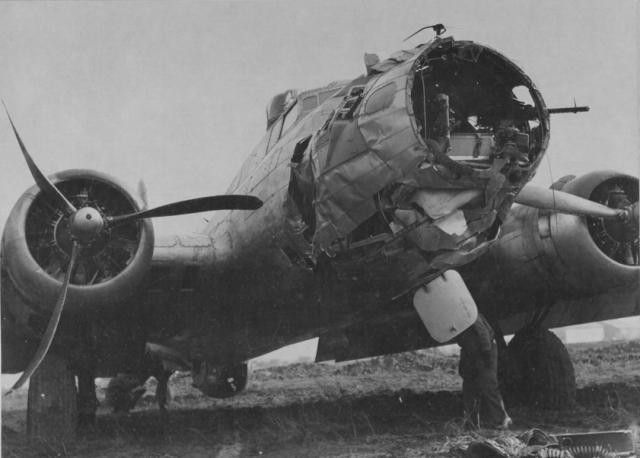
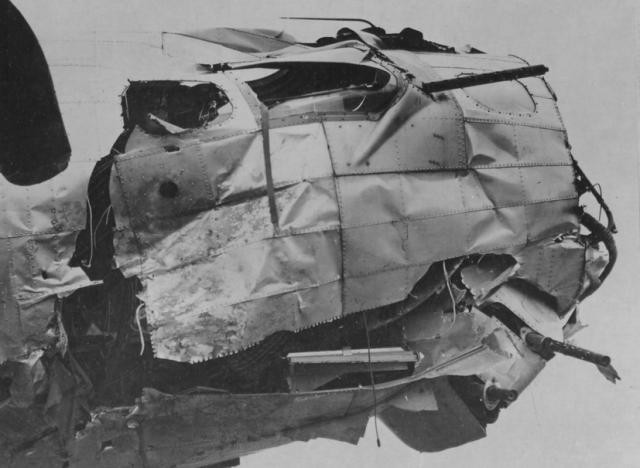
This B-17G-75-BO (s/n 43-38071) landed at Brustem Airfield in Belgium on March 17, 1945, after a mid-air collision with another B-17G (s/n 43-38046). Both aircraft were from the 490th Bomb Group, 8th Air Force. This plane took off with its standard crew of 10 but landed with 11 aboard…one dead. The body of radio operator (Sgt. George Devlin) from the other B-17 was somehow thrown into the nose of this aircraft during the collision. [Via / Via]
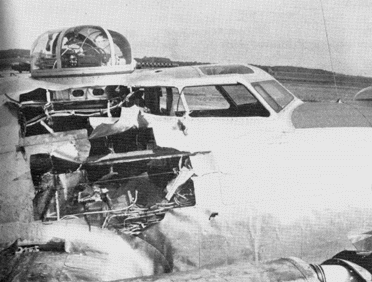
A ground-launched rocket missile caused this damage to 388BG’s “Panhandle” during an attack on a V-weapon site, June 15, 1944. The missile struck number 3 engine, ricocheted into the fuselage and exploded, leaving Sgt Biggs, the top turret gunner, with nasty burns. Despite extensive damage to various control lines, Lt McFarlane brought the bomber down safely at Manston.[Via]
Jun 19, 2016 Joris Nieuwint

SHARE:FacebookTwitter
The B-17 Flying Fortress was famous for being able to take a lot of damage and still make it back to base. We have collected some incredible images of damaged B-17 Flying Fortresses that made it home.
https://www.warhistoryonline.com/military-vehicle-news/damaged-b-17-bombers-that-made-it_home.html
During WWII 12,732 B-17’s were produced between 1935 and May 1945. Of these 4,735 were lost in combat, a staggering 37 percent.
Each image could and should be an article in itself, and wherever possible we’ve added some descriptive text.

B-17G 43-38172 of the 8th AF 398th BG 601st BS which was damaged on a bombing mission over Cologne, Germany, on 15 October 1944; the bombardier was killed. [via]

A B-17 of the 100th Bomber Squadron of the USAAF rests in an English airfield after being severely damaged by flak over Frankfurt. She was eventually repaired and returned to regular duty, 1944. [via]

Two shots of a B-17 from the 379th Bomb Group with most of the nose missing [via]

On the second one it seems the Pilot is looking up at the damage [via]

B-17 Eager Beaver Tail Damage (C. 1942). Serial No. 124393 full of holes. The entry in the pilot’s diary, dated Feb 18th, 1943, says, “New waist gunner shot hell out of tail today. Ship out for a week.” “For the full story and all entries from dad’s diary, see my book on Amazon.com “A WWII Journal” by Randy Graham.” [via]


Boeing B-17F-5-BO (S/N 41-24406) “All American III” of the 97th Bomb Group, 414th Bomb Squadron, in flight after a collision with an ME-109 over Tunis. The aircraft was able to land safely at her home base in Biskra, Algeria. [via]

4th of February, 1944, Boeing B-17F-90-BO Flying Fortress, 42-30188, “Temptation” of the 413th Bomb Squadron, 96th Bomb Group, during take off for a mission, suffers runaways on Nos. 1 and 2 propellers. Lt. Joseph Meacham attempts landing at a nearby – as yet unfinished – base, but crash lands at East Shropham, Norfolk, All eleven crew survive, but the aircraft is damaged beyond repair and is written off, fit only for parts salvage. [via]

This is 42-107040, Shirley Jean of the 324th Bomb Squadron, 91st Bomb Group. [via]

6th November 1944, B17G Rackheath – Close-up view showing the enormous hole from the flak-damaged B17 of the 91st BG that returned safely to Rackheath. [Via]

B-17 Little Miss Mischief after an emergency landing in Bassingbourn [via]
Continues on Page 2

B-17 damaged in collision with Fw190 in head-on attack [via]

Waist gunner killed, ball turret gunner killed, radio operator blown out of the airplane completely, but this Fort still managed to get home and land without cracking in half. [via]

401st Bomb Group B-17G Belly Landed in England, October 29th, 1944.

B-17 91 Bomb Group 324 Bomb Squadron with heavy flak damage [via]

The “Belle of Liberty” Lockheed/Vega B-17G-15-VE s/n 42-97479 327th BS, 92nd BG, US 8th AF. Damaged on the 6th of March 1944 mission to bomb the ball-bearing plant at Erkner, in the outskirts of Berlin. This aircraft was repaired and went back into service. [via]

This B-17 took a direct flak hit in the waist over Debrecen, Hungary, which killed three crewmen and wounded two others. Threatening to come apart in mid-air the pilot nursed it home to a safe landing, but the weakened fuselage collapsed on touchdown. [via]

The only information that came with this photograph was B-17F – 97 Bomb group


This B-17G-75-BO (s/n 43-38071) landed at Brustem Airfield in Belgium on March 17, 1945, after a mid-air collision with another B-17G (s/n 43-38046). Both aircraft were from the 490th Bomb Group, 8th Air Force. This plane took off with its standard crew of 10 but landed with 11 aboard…one dead. The body of radio operator (Sgt. George Devlin) from the other B-17 was somehow thrown into the nose of this aircraft during the collision. [Via / Via]

A ground-launched rocket missile caused this damage to 388BG’s “Panhandle” during an attack on a V-weapon site, June 15, 1944. The missile struck number 3 engine, ricocheted into the fuselage and exploded, leaving Sgt Biggs, the top turret gunner, with nasty burns. Despite extensive damage to various control lines, Lt McFarlane brought the bomber down safely at Manston.[Via]
Galería recorriendo el B-17 Flying Fortress de la Fundación Collings (18 fotos)
Última edición:
Bomber and Escort by Daniel-Wales-Images
Boeing B-17G Flying Fortress "Liberty Belle" y North American TF-51D Mustang "Miss Velma"

Boeing B-17G Flying Fortress "Liberty Belle" y North American TF-51D Mustang "Miss Velma"

El B-17E 41-2401 fue utilizado por Lockheed/Vega como base para el prototipo XB-38 que consistía básicamente en un B-17E con distinta motorización. En lugar de los motores radiales Wright se emplearon 4 motores de 12 cilindros en V refrigerados por agua Allison V-1710-89 de 1425 hp. Los nuevos motores incrementaban la velocidad y el alcance. Pero por un lado los motores Allison estaban muy solicitados para los aviones de caza P-38 Lightning y P-40 Warhawk por otro el prototipo que voló por primera vez el 19 de mayo de 1943 se destruyó por un incendio en los motores el 16 de junio del mismo año y se decidió no proseguir el desarrollo.








YB-40


Tenia al Y-b40, pero no la version del B-24


Tenia al Y-b40, pero no la version del B-24
La fortaleza B-17G 'Miss Donna Mae II' vuela a la deriva debajo de otro bombardero durante el bombardeo de Berlín, el 19 de mayo de 1944.

Una bomba de 1,000 libras desde arriba les arrancó el estabilizador izquierdo y puso al avión en un giro incontrolable. Los 11 tripulantes perdieron la vida.

Una bomba de 1,000 libras desde arriba les arrancó el estabilizador izquierdo y puso al avión en un giro incontrolable. Los 11 tripulantes perdieron la vida.
Brutal dogfight (pelea de perros) cerca de una fortaleza voladora B-17 en enero de 1943... 



